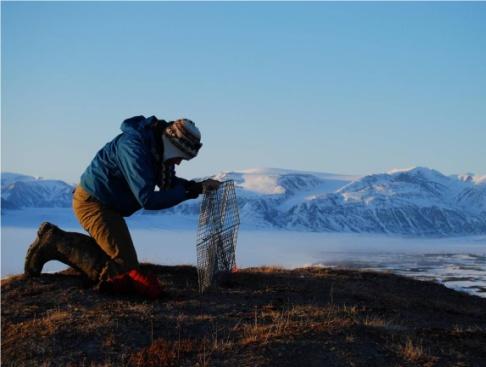Many northern ecosystems are undergoing major shifts related to climate change. An understanding of this transformation and of the significance of its consequences is critical to anticipating ways in which potential negative and positive effects to wildlife populations (and ultimately humans) may be mitigated or used through sound management.
Our overall goal is to provide the wildlife-related knowledge necessary to conduct the integrated regional impact studies of the "Eastern Arctic" and "Hudson Bay", two of the four regions identified by ArcticNet to conduct regional impact studies. We work through 4 specific objectives.
First, we identify the main vulnerabilities of Arctic wildlife with regards to climate change. Second, we monitor more than 30 wildlife populations, mostly tundra wildlife and marine birds, at nine main study sites (see map).
Third, we use data from our own field work and from the literature to analyze past and present responses of wildlife to climatic variability in order to develop Impact Models.
Finally, we project some wildlife pat-terns into the future by forcing these Impact Models with regional climate change scenarios.
